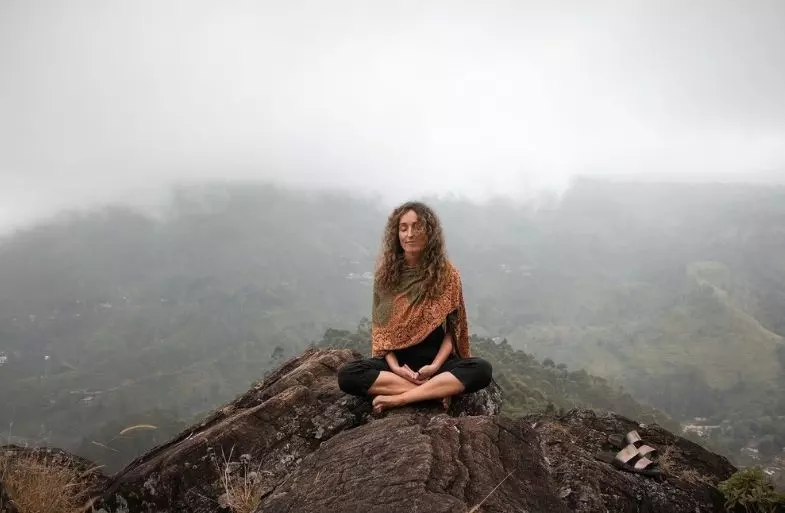What is meditation and what does it mean?
Meditation is a mental exercise that can help you to become more aware of your thoughts. It is also a way to train your mind to be more focused and present.
Meditation can be done in many different ways, but it usually involves sitting or lying down with an open posture and focusing on breathing.
Even today there is an infinity of meditation techniques and as many different teachers trained according to extremely varied spiritual philosophies.
The fundamental meaning of meditation is always one: to know and study one’s mind, thus becoming aware of how life on Earth works.
According to Tibetan Buddhism, meditation is awareness itself. That is, meditating is a mental exercise that encourages us to become aware of what we are thinking, doing, observing, listening, perceiving in the present moment.
According to this tradition, meditation helps us to free ourselves from the suffering that comes from a lack of understanding about the real functioning of life. When what we believe to be true does not coincide with the Ultimate Truth (i.e. that physical existence is an extension of the Source of Life, and that everything we experience in this dimension is a reflection of our beliefs and emotions) we create suffering and pain without the possibility of getting out of this hellish spiral.
Knowing how one’s mind works and observing how the reality we live is created leads us to have greater confidence in life and therefore to create a richer and happier existence.
The unhappiness produced by a mental imbalance
The key to meditation is awareness. It is the winning key to becoming truly free, as only when we know what we have in front of us, even if we don’t know how to “get rid of it”, is it as if we had lit up a dark room by simply pressing the power switch.
What appeared to us even more ugly, big and monstrous in the deep darkness of unawareness, now appears to us as it is: not at all scary! Maybe it can still scare us, but with practice, we can learn to overcome this very difficult emotion.
This is a metaphor for what happens when we start practicing meditation consistently and spend at least 20 minutes a day observing our thoughts, our emotions, and above all our fears! So even your greatest fear can be a mask that hides a much less strong emotion.
What is the difference between “normal” and “meditative” awareness?
Without awareness, we could not function as Living Beings, as it would not be possible for us to observe the surrounding world, interact with others, move, walk, talk …
Meditative awareness is knowing that a certain thing is being done, for example: “I know that I am thinking about a certain thing / I know that I am walking on the street and I observe the movement of my feet ”.
If in everyday life we act and think automatically, taking life itself for granted, with meditation we realize the wonder of being alive and we see the essence of a Universal Creative Power that gives life and moves every single organism on this. and other Planes of Existence.
Awareness is the path to death, lack of awareness is the path to death. Those who are aware do not die, those who are not areas if they are already dead.
Siddhārtha Gautama Buddha, Dhammapada (Verses of the Law), 5th cent. a.e.c.
How to meditate in practice?
In practice, meditation is very simple. If you prefer to follow a guided meditation, you can try with the instructions provided in this video of mine: Just sit with your feet on the ground or with your legs crossed (if you are trained to stay in this position for at least 20 minutes!).
Keep your back straight and your head slightly bent forward, to make sure you are perfectly straight. Avoid bowing your head too far back or forward! Keep your shoulders relaxed and place your hands on the thighs or one hand inside the other on the abdomen. There should be a small space (a “triangle”) between the arms and torso.
Close your eyes naturally and relax your body whenever you can. Now notice the body sensations you perceive, your emotions, observe the thoughts that come and go, pay attention to the noises of your environment, or notice if there are particular smells, and the temperature of the room (hot / cold?).
You can use any element in your physical reality and gently bring attention to it. It is advisable to alternate the focus of our meditations (on thoughts, emotions, body, breath, sounds, smells, temperature …) so as not to make them repetitive. You can also alternate keeping your eyes open or closed from time to time. You will notice over time that you will be able to focus on the present moment for longer and longer periods and that the space between one thought and the other will tend to expand more and more.
But don’t expect complete silence or the absence of thoughts and emotions! It is like the mind to produce thoughts at very fast rates! Instead, focus on the perception of those thoughts and emotions!
The physical mind, with this gradual process of awareness and meditation, will transform itself into support for meditative practice. Slowly you will become the “head” of the mind and not the other way around!
This only serves to strengthen them! Instead, focus on recognizing these thoughts and emotions and practice observing the functioning of the physical mind.
Conclusion
Finally, the ultimate goal is to apply meditative awareness outside of the 20 daily minutes that you initially reserve for it, and therefore for everything you do. Be softly (because only part of you will be focused on a certain activity or element in the surrounding environment) aware of what you are doing, saying, thinking … this is a very simple practice that allows you not to react like a mad monkey to the stimuli of the outside world. You’ll be more lucid and balanced, and others will benefit immensely too!


